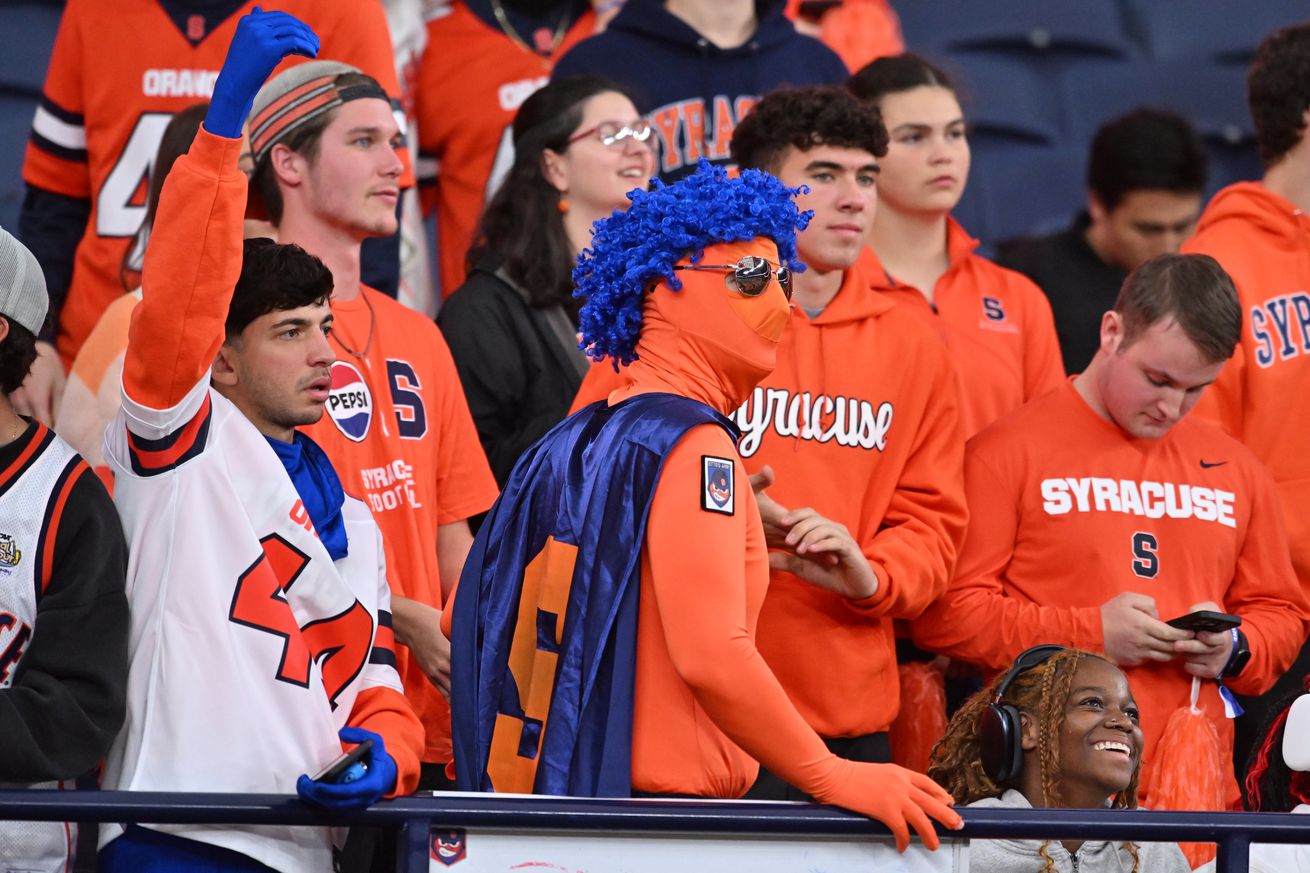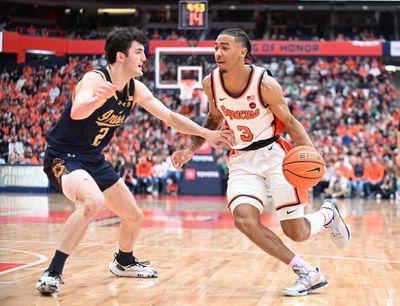
Five ways the current status of the case may affect SU Athletics
As covered in PART 1, Syracuse Orange athletics and colleges across the nation are gearing up as 2025 may be one of the most formative years in NCAA history.
With The House v. NCAA case set to reach a head, we will soon know whether Syracuse Orange athletes will be able to receive payment from the school, whether the school will owe debts to previous athletes, and how these changes will affect other facets of college athletics such as NIL, scholarships, roster sizes, and more.
When learning about these complicated dealings, a Syracuse fan may specifically wonder: How could these changes affect the Orange? This piece will serve to explain five ways that The House v. NCAA case may affect Syracuse.
1. Title IX Policies
A subject that has made plenty of headlines over the last few years is Title IX, and its impact on ensuring equal opportunities at educational institutions. One of the primary aspects of Title IX is that it provides a basis for women’s athletes to receive the same amount of scholarships as men.
It is important to note that the Title IX policy is not as strong as many make it out to be. So what happens when the schools start paying the players directly? According to PBS, a vast majority of NCAA revenue comes from only two sports, football and men’s basketball. In fact, these two sports are really the only sports in the NCAA that are consistently profitable. According to research from UChicago, these two sports generate nearly 60% of all revenue for schools, giving them a significantly higher weight to the claims that these athletes should be paid more than others.
Of course, football does not have a female counterpart, but basketball does. Syracuse will have to wrestle with whether or not they pay players on the women’s team as much as those on the men’s despite the fact that the men’s players typically bring in much more revenue.
Many further questions can stem from this. Should all Syracuse athletes be paid the same rate? Do the men’s sports that are more profitable deserve for their athletes to get more pay than women? Will Title IX get involved in some regard here, or will it make no difference? It seems that we might just have to wait a few years to find out.
2. A tiered pay system?
As discussed in the last section, it seems likely that there will be debate over how much SU athletes will get paid based on their sport. But how will SU make this decision? Will there be a tiered system?
When looking at the profitability numbers of each SU sport, a tiered system would see MBB and Football in the ‘A’ bracket. Essentially, every other sport loses money, putting them in a ‘B’ bracket. Lastly, women’s basketball is far and away the least profitable sport, losing the school a ton of money, possibly putting it in a tier of its own.
With men’s basketball and football being the only sports that keep SU athletics stable (as with most P5 schools), should they see their tier of pay be two, three, or even four times as high as the other sports?
Additionally, another question may be raised about paying star players. Should someone like Judah Mintz, who was the face of the program for two years, have been paid more than, say, Mounir Hima? Mintz’s name, face, and quality of play alone brought tons of benefits to the school, probably more than any other player during his time here.
So how much more should he be paid than other players on the team? Could this result in friction inside locker rooms? Will SU opt to just pay all of the athletes a consistent rate?
The paying star players more model has already been adopted through the NIL model, so that seems like it will be the case. Similarly, the NIL model does see the men’s football and basketball players earning the most money. The question is whether SU can escape scrutiny and legal issues by paying their ‘employees different rates to perform the same job.

Mark Konezny-Imagn Images
3. Disintegration of SU’s current NIL collectives
Speaking of NIL, when schools start being able to pay athletes directly, will this make the role of NIL organizations obsolete? Will they just be absorbed by the school?
Over the last few years, SU has seen a few different NIL organizations and programs pop up, including ACCELERATE, Orange United, Athletes Who Care, SANIL, and a few others.
The question here becomes, why would these athletes worry or agree to sign up with NIL collectives if their profit is coming through the school? For example, the Athletes Who Care collective sees players give their time to charitable work and are paid their NIL deals in return.
Obviously, we would love our athletes to be charitable and give back to the community, but if they are being paid through the school straight up instead of having to do this charitable work in order to get paid, why would they even sign up?
Questions like these will have an impact on all of the current NIL infrastructure that Syracuse has already set up. This will be disappointing and difficult for many of these organizations, which are only a few years old and have poured tons of time and effort into forming them. One question that may solve or deal with this issue would just be SU absorbing all or some of the NIL organizations, but this will have to wait until after the final ruling before moves start being made.
4. Player Poaching
This issue is one that is fairly obvious and straightforward but ties back to all of the aforementioned topics. While the problem of player poaching has already become worse in the NIL era, this new ruling may exacerbate the problem even further.
Everyone loves money. If you are a student-athlete and you have a chance to elevate your status, name, and pay, then why not take it? With the leverage of a P4 school with tons of revenue, strong programs, and strong athletic infrastructure, Syracuse is a good candidate for transfers looking to move up the college athletics totem poll.
The ability for schools to directly compensate their players will further separate P5 schools from their smaller opponents as they have more revenue and will be able to pay their players more handsomely for their efforts. This could certainly make it easier for the Orange to poach top talent from schools like UAlbany, Cornell, Army, or Lafayette.
This change stands to benefit the Orange in some ways, but they are not the biggest dog in the ring. Some of the Syracuse sports have been nationally competitive, while others haven’t fared as well. If you are a school like Georgia or Texas, you will have much more revenue to poach SU’s top football players by offering them more money, success, and a bigger platform. Similarly, Duke or UNC could offer the same benefits to an SU basketball player.
While one would hope that SU’s athletes stay loyal to the school, the NIL era has seen an increased rate of players transferring in search of more money and better opportunities. The House v NCAA case may just worsen this issue.
5. Student-athletes as SU employees?
One final major question is how student-athletes becoming SU employees will affect employee dynamics both here in Central New York but also in schools across the nation. It is already well understood that student-athletes are employees of the school, but if The House v NCAA case goes as expected, this relationship will be formalized and solidified.
According to GLASSDOOR, the average SU employee makes $67k annually. Professors make somewhere around $100-150k annually. Imagine walking into a class to teach, knowing that the star quarterback on the team is in your class and makes five times more than you for playing football and learning from you. Even worse, imagine working as a janitor and taking out the trash of an athlete who makes ten times more than you. This all seems quite unfair.
Will this unbalance lead to unrest amongst SU employees to the point of taking action? Could it lead to some type of strike or stronger unionization efforts?
In the case of a union, SU athletes may even have the chance to take part as employees, further complicating things. It seems too early to speculate too much on this topic now, but on face value, it appears as a potential source of extreme tension for employees.
Conclusion
In conclusion, as we have seen with the NIL landscape, it is really difficult to predict where things will go. All that can be said for sure is that The House v NCAA case will have a sizable and marked impact on college athletics.
The mentioned issues could become prevalent or fade into obscurity. Additionally, an entirely new and unforeseen slate of issues could enter the playing field. The first steps in this domino effect will come in the next few months when we see how much athletes will make off of the case and where the problem is trending. For updates on these developments and all things SU athletics, stay tuned.